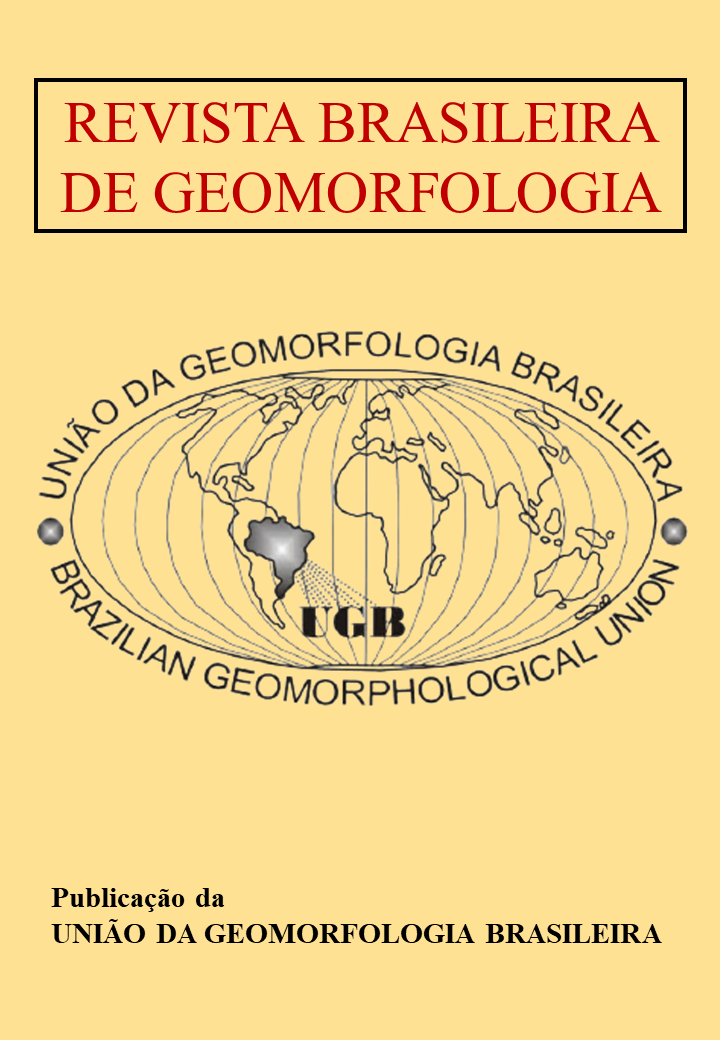Subterranean river captures in siliciclastic rocks in a semiarid climate: the case of the Poti River Canyon, Brazilian Northeast
DOI:
https://doi.org/10.20502/rbgeomorfologia.v25i2.2446Palabras clave:
Drainage rearrangement, Epigenesis, Parnaíba RiverResumen
This research investigates a possible subterranean river capture responsible for the morphogenesis of the Poti River
Canyon, which crosses the uplifted edge of the Parnaíba Basin, in the northern Northeast of Brazil. Morphological and
lithostructural evidence of river captures was analysed using remote sensing products (e.g., drainage network, topography,
paleotopography, structural framework) and field expeditions. The results indicated a sudden inflexion of the upper course
of the Poti River, low and anomalous divides in the local geomorphological context, canyon with valley segments exhibiting
asynchronous morphologies, and block collapse controlled by dissolution along fracture networks. Given this set of data, we
propose an evolutionary model of subterranean river capture for the formation of the Poti River canyon, which, through
paleotopographic modelling, was linked to the Pleistocene epoch. This drainage rearrangement would have been influenced
by a Neogene-Quaternary morphogenetic framework of structural reactivations, regional uplift, and climatic oscillations. On
this basis, it was concluded that epigenetic processes were significant for a drainage rearrangement of approximately 10,540
km² of areas in a semiarid region with sandstone substrate.
Descargas
Descargas
Publicado
Cómo citar
Número
Sección
Licencia

Esta obra está bajo una licencia internacional Creative Commons Atribución-NoComercial 4.0.
Autor(es) conservam os direitos de autor e concedem à revista o direito de primeira publicação, com o trabalho simultaneamente licenciado sob a Licença Creative Commons Attribution que permite a partilha do trabalho com reconhecimento da autoria e publicação inicial nesta revista.









